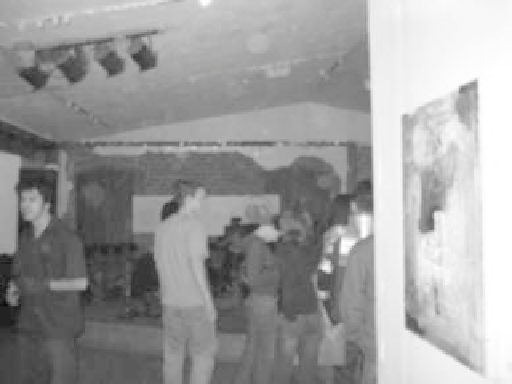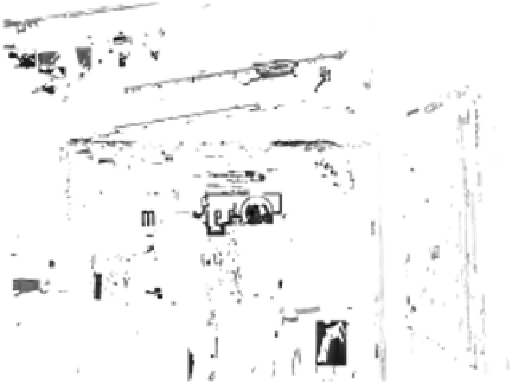Environmental Engineering Reference
In-Depth Information
FIGURE 25.6
Phoenix art scene.
25.5 Slash City
I have described the attitude as well as outcomes embraced by canalscape as well as these
creative entrepreneurs as
Slash City
(
/city
) because of the hybrid functions (this-slash-that)
and the emphasis on the slash itself, on what happens where these functions meet.
1
The city celebrates the boundary, edge, or threshold as the place where people, things,
and ideas converge. It does this by not only retaining the integrity of each activity and
group of people (e.g., bakery, restaurant, residence, gallery), but also allowing for easy
movement between them through the creation of porous “membranes”: separators that
are physically, visually, and/or symbolically permeable. This is an urbanism that refuses
to stay within the lines, that seeps through (seeping of views, people, and activities,
inside and outside).
Conventional big box stores, schools closed off from their surrounding communities,
and gated communities are not porous. The /
city
is. This approach and the landscape
it generates reflect the complementary human urges to merge (connect) and to separate
(for distinction, individuation), with the ongoing tension and dynamism these generate.
In the process, we are also integrating—or slashing—the professions that divided and
subdivided: architecture/planning/landscape architecture/engineering/interior design/
industrial design/graphic design/fashion design/sculpture/painting/performance art/
etc. We are perhaps “slashing” (in the sense of deconstructing) some existing structures of
thinking, acting, and building for the sake of reconstructing. This reconstruction features
permeable boundaries (the slash itself) that become thresholds of diversity: biodiversity,
social and cultural diversity, artistic diversity, and commercial diversity.
The pop culture trend to
slash
television programs bears some interesting parallels with
slash urbanism. Published in “slash zines” and on numerous websites,
slash
is a subgenre
of
fanic
which involves rewriting television programs through recontextualization (filling
in the gaps between episodes), expanding a series timeline to past or future, refocusing
(shifting attention from main characters to secondary ones), moral realignment (for instance,



Search WWH ::

Custom Search